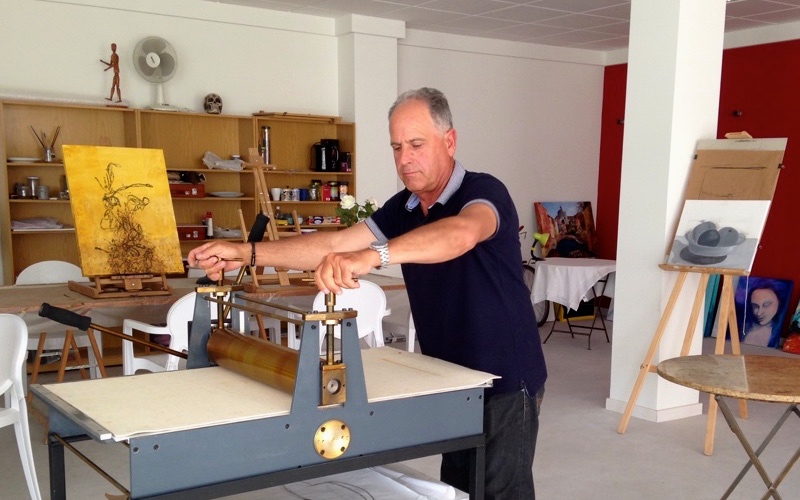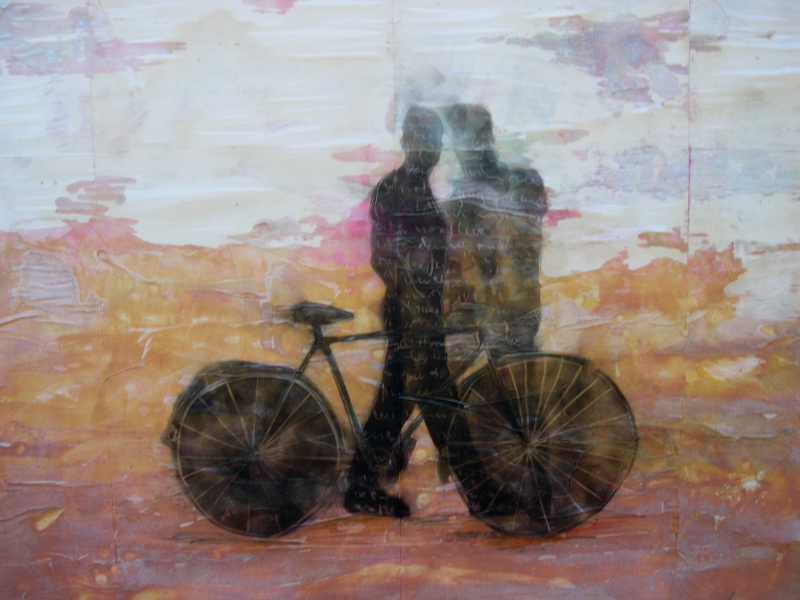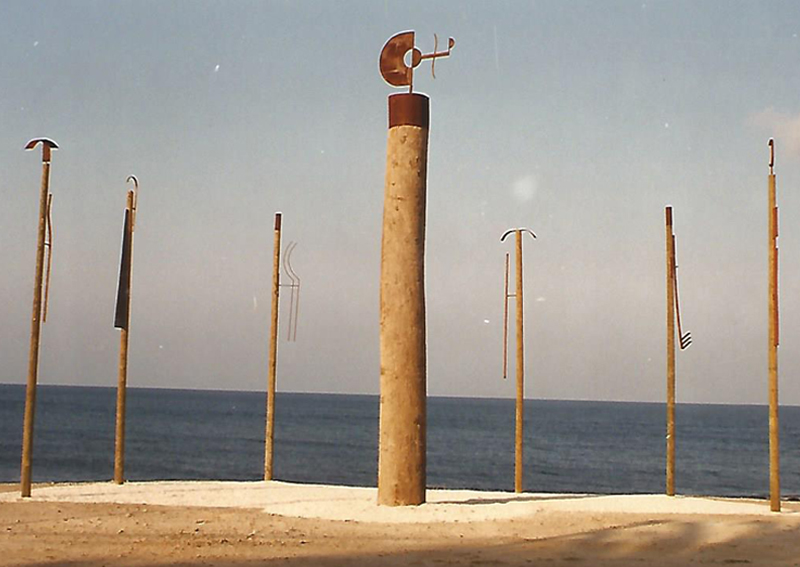SiverART
TOMÁS SIVERA VALLÉS
 Tomás Sivera, 2-dimensional plastic creator committed to himself
and his contemporaries, reflects in his work an interest for the human being in a social, political
and economic context, which, is present in all his paintings and which are a turning point centred
around what we are, who we are, why, what for... some of humanity's greatest questions, which rarely
have an answer, only retains their reflection and impression, are shades of the human being, which
through the use of black in the shadows that being projects enable a less meticulous shape that
doesn't distract the audience's attention, as well as emphasize semantic concepts such as volume,
form, which on their own, acquire a human status, from the inside out, externalizing his feelings
and Tomás' work's expressive intent.
Tomás Sivera, 2-dimensional plastic creator committed to himself
and his contemporaries, reflects in his work an interest for the human being in a social, political
and economic context, which, is present in all his paintings and which are a turning point centred
around what we are, who we are, why, what for... some of humanity's greatest questions, which rarely
have an answer, only retains their reflection and impression, are shades of the human being, which
through the use of black in the shadows that being projects enable a less meticulous shape that
doesn't distract the audience's attention, as well as emphasize semantic concepts such as volume,
form, which on their own, acquire a human status, from the inside out, externalizing his feelings
and Tomás' work's expressive intent.
A Humanist painter, which, with his work, searches the human being's freedom, to make him find himself
and in its own context. Using a limited palette, while rich when transferred to the canvas, like a
primitive painter, prehistoric, even, he uses the red and black colours that prevail in his work,
the other colours are conditioned and complement this base. The shadows' representation occurs because
there is someone who causes them, but without details, transparencies and reflexive shades that hide
the desire of the representation and above all, make the observer think.
Moisés Gil
Prof. Dep. Escultura de la U.P .V.
BLACK OF SMOKE
 In Tomás Sivera’s pictures a dark patch is superposed on a
neat area, the drawing to the painting. Its bottoms are papers or woods that the painter
has stained repartly with the purpose to obtain fragile plane or wrinkled matters tan de
successives capes of vanishes cool and proyect them like a brilliant glass will do.
In Tomás Sivera’s pictures a dark patch is superposed on a
neat area, the drawing to the painting. Its bottoms are papers or woods that the painter
has stained repartly with the purpose to obtain fragile plane or wrinkled matters tan de
successives capes of vanishes cool and proyect them like a brilliant glass will do.
The superposed drawings are accomplished with a technique so old as the black of the smoke. In the caves, the ancestors
of the artists described their cynegetic tótems with the same technique, using extinguished candlewood for the porfiles
and inflamed for the shadows.
Tomás Sivera is not the only current artista that use this technique. Between all, we can stan out the Czech, who ended to
the Spanish, Jiri Dokoupil who has pited some time with extinguished or inflamed candlewoods or José María Sicilia, from
Madrid, who has used similar resort on cerulean areas, a naturalist redundance about our times technique. Both looked for
similar results tan Sivera in his pictures.
The fact is that Tomás Sivera Works isolated and almost without reference in his native Jávea. Without thinking on the work
of Dokoupil or Sicilia, without knowing the work of the painters whom the big galleries show. Sivera is a self-taught painters,
as people said in old times, without other relation with the academy tan the things he learned from a painter: Juan Segarra
Llamas. All the other things belong to him: lots of hours experimenting almost alone.
From which mystery pathless places has the contemporariness arrived to the self-taught studio who has to steal the hours to
sleep for painting? We can find the mystery, the ambiguity, the minimalist decrease and the times mention in his pictures with
the same power than the one we can find in the pictures of another artists with more resorts and information. Besides, Tomás
Sivera beat them on modesty and lack of pretensión, value for an isolated artiste from who we can expect more.
Horacio Fernandez
TEATRINI
 It has been a long time, since Tomás Sivera is wondering arround
the Art world, and it is so because it is not usually for him to go straight as if he Knew exactly
beforehand what he is going to find in his trip. Although his work is real, his process of
painting is not a mere translation of what is already known. In fact, I said “paintings”, but Tomás
Sivera has not only selected painting, but also he is seduced by esculpture as it can be seen in
his work “Astes al Vent” in the way to the port of Xàbia. A painted trunk next to the chuch in the
forth edicion of “Llocs Lliures” (1994)- without doubts the most important event, produced in the
Marina Alta, shows his plural Knowledge.
It has been a long time, since Tomás Sivera is wondering arround
the Art world, and it is so because it is not usually for him to go straight as if he Knew exactly
beforehand what he is going to find in his trip. Although his work is real, his process of
painting is not a mere translation of what is already known. In fact, I said “paintings”, but Tomás
Sivera has not only selected painting, but also he is seduced by esculpture as it can be seen in
his work “Astes al Vent” in the way to the port of Xàbia. A painted trunk next to the chuch in the
forth edicion of “Llocs Lliures” (1994)- without doubts the most important event, produced in the
Marina Alta, shows his plural Knowledge.
The serie presented in this show, is the result of an echo of that interesting exhibition Negre
de fum, which took place in the Espai d’art A. Lambert of Xàbia in 1995. In that occasion, the
drawings done with the charcoal that is left behind the trial of the smoke of the flames, floated
on the pictoric, milky background, like washed or scrachted by the passing time.
Now, the backgrounds of that stock, are colored, gay, but not absent of that appearance of worn
out surface, mistaken where, paradogically, the paint appears as a strip off. In them, we can see
a dancer, several puppets, and a wheelbarrow of the old tales, like elements of one of those
stories which origin is lost in the confussion of the past times or in the intemporalilty of the
dreams. Kind dreams or, in any case , light daydrams which float arround us when we get abandoned
to the rest, to the reading,...
There is nothing pompous in this pictures, neither the feeling of establishig great truths nor
the ripping apart of the canvas, aspects so common nowdays in the art-world. Only canvas, in the
way of precarious Teatrini that give us, in a fixed manner, the net experience of the pleasure of
painting.
Nicolás Sánchez Durá

